About 90 miles from Mumbai, in the western Indian state of Maharashtra, lies Shivpada, a small village of only a few hundred people. An estimated 93 percent of adults in the village are not vaccinated against Covid-19, according to a local health worker. Raman Devji Dolhare, a farmer who lives here, stares blankly when asked about his age. Dolhare turns to the two health workers standing near him for a clue, and the women estimate that he might be around 55. He nods, still uncertain, but there are two things the man is sure about: the false belief that Covid-19 does not exist, and that people who get vaccinated against it die.
Dolhare says that no one in his immediate family has been vaccinated. "Why should we take the vaccine when people are dying after taking it?" he asks. "I've heard. I've seen also. In my own family, a relative died. I went to his village. He took the vaccine and he died."
The health workers try to explain to Dolhare that his relative succumbed to Covid-19, and that he, too, should be inoculated to protect himself from infection. "But how will I get corona if it doesn't exist?" he asks, repeating the false claim.
The tribal belt where Shivpada lies spans 16 villages, says medical officer Yogesh Pawar, and Covid-19 vaccination rates are low across the region: He estimates that 82 percent of the population hasn't had a single shot. This is in stark contrast to India as a whole, where 73 percent have received at least one dose. In October 2021, Prime Minister Narendra Modi took to Twitter announcing the administration of one billion vaccine doses in a nation of 1.4 billion people. Amid allegations of manipulations in vaccination figures, the official number of doses administered stands at more than 1.87 billion today. The coverage, however, faces a deep urban-rural gap. The situation is especially stark in the tribal-dominated districts of rural India, where Covid-19 vaccination coverage is the lowest.
"They keep saying that if they took the vaccine, they would die in a year or two, that it's OK if they die from Covid, but they wouldn't take the vaccine," says Pawar, who works at the Amgaon Primary Health Center, a referral unit that acts as the first point of contact between residents of the 16 villages and India's public health system. "They escape the moment they see me, or any other health worker."
In some cases, the resistance has grown violent, says Dayanand Suryawanshi, the district health officer of Palghar in Maharashtra. When health workers visited to promote the vaccine, villagers assaulted them, he says. "The villagers vandalized the vehicle, and beat up the health workers. The staff included men and women," he adds. "Because such instances shouldn't be repeated, even we have stopped pushing."
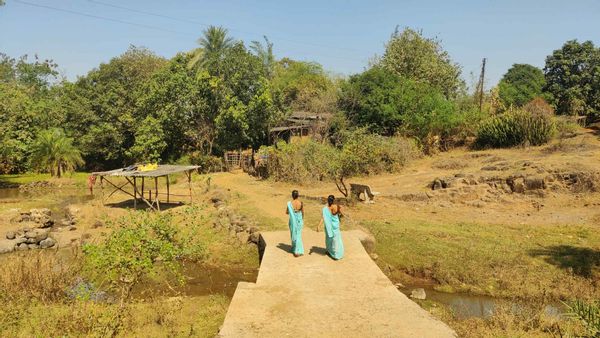 Two health workers walk toward a tribal village in Talasari. (Photo by Puja Changoiwala for Undark.)
Two health workers walk toward a tribal village in Talasari. (Photo by Puja Changoiwala for Undark.)
In more than two dozen interviews with villagers, health workers, and local leaders in the tribal villages of Talasari, a subdivision of the Palghar district where Shivpada lies, Undark identified the four most common barriers to vaccination in the region: the fear of side effects, misinformation, distrust in the public health system, and a lack of guidance from community leaders. Other deterrents include the influence of local religious leaders and waiting for others to take the vaccine first.
Some experts say that vaccine hesitancy may have far-reaching implications for India's pandemic recovery. Nationwide, in December an estimated 69 million Indians — greater than the entire population of the United Kingdom — were hesitant to take the Covid-19 vaccine. Seema Yasmin, director of the Stanford Health Communication Initiative, says she feels that such vaccine hesitancy among India's tribal communities, also called Adivasi, will not only have a profound effect on these communities, "but it undermines India's ability to recover from the pandemic as a whole."
The fear of side effects is strong in many rural communities. Minu Dhori, for instance, is a resident of Bormal, a village that falls under the Amgaon Primary Health Center. She says she is afraid of Covid-19, but won't get inoculated because of her diabetes.
"I'll die if I have to, but I won't take the vaccine," Dhori, a vegetable vendor, says, sitting on a highway in Talasari, her vegetable cart parked in front of her. "Someone who took the vaccine, he got paralyzed. I know that person. He, too, had diabetes. He took the vaccine, and then he got paralyzed. He was quite old. I'm also old, maybe 60, maybe more."
Like Dhori, Suresh Wartha, a resident of Kochai village, says that he does not want to take the vaccine, as he has asthma. A woman from Shivpada, Naina Kakad, says that she cannot take the vaccine, as she is taking medicines for an illness, which make her dizzy. A tribal man, Ratna Rupji Wartha, meanwhile, says that he is afraid of taking the vaccine because his hemoglobin levels are low.
While health officials encourage people with diabetes, asthma, and other chronic diseases to get vaccinated to prevent severe illness from contracting Covid-19, hesitancy still abounds.
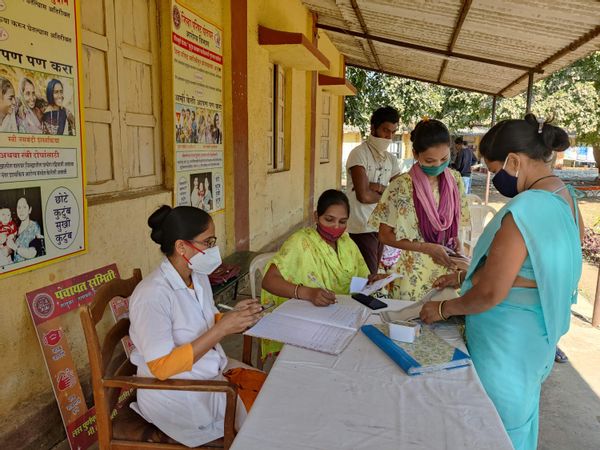 Health workers at a vaccination center under Amgaon Primary Health Center register villagers for a vaccine clinic. (Photo by Puja Changoiwala for Undark.)
Health workers at a vaccination center under Amgaon Primary Health Center register villagers for a vaccine clinic. (Photo by Puja Changoiwala for Undark.)
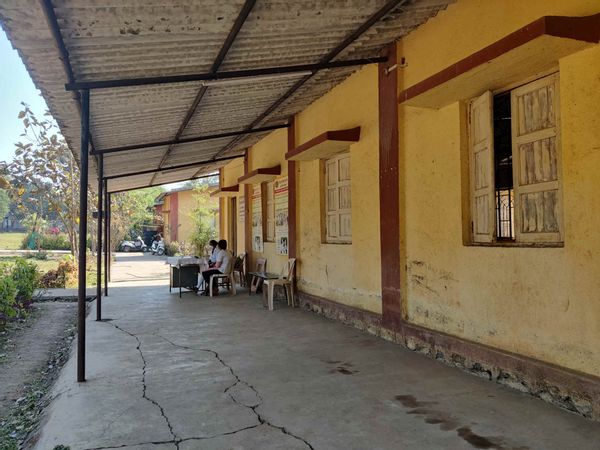 Later that day, the vaccination center is empty. (Photo by Puja Changoiwala for Undark.)
Later that day, the vaccination center is empty. (Photo by Puja Changoiwala for Undark.)
"If I take the vaccine and if something goes wrong, who will take care of me?" asks Wartha. When asked if he had seen someone fall sick owing to vaccination, the farmer denied it, stating: "No one has taken the vaccine, so how will they fall sick? I do not know anyone in the village who has taken it. Even my relatives, no one has taken."
Much of the fear around vaccination comes from false claims: India is the top source of social media misinformation on Covid-19 in the world, according to a study published last summer. A survey on vaccine misinformation in rural India, conducted in April and May of 2021, suggested that 55 percent of people in rural India were afraid of the vaccine, with more than half of these respondents believing that vaccines cause death. The same survey also concluded that nearly half of rural Indians depend on word of mouth as their primary source of information, while others rely on television, newspapers, WhatsApp, and Facebook.
Some villagers in Talasari also point to the deaths of two political leaders in Palghar, both of whom succumbed to Covid-19 in April 2021 — Pascal Dhanare, a former Member of the Legislative Assembly, and Laxman Varkhande, district vice president for the Modi-led Bharatiya Janata Party. The deaths sparked fear among the tribal community, with many villagers blaming the vaccine for the leaders' deaths, says Subhash Kharpade, a member of the village council in Shivpada. "We don't know what happened exactly, but people here are illiterate," Kharpade adds. "These rumors have spoilt everything."
An auxiliary nurse midwife named Rupal Nagrat, who works at the Amgaon Primary Health Center, says misinformation is rampant in the tribal villages of Talasari. "People here think they won't get Covid. Some think they will die after a few years if they take the vaccine," she says. "Ladies think that if they take the vaccine, they won't have kids. There are many misconceptions here." The reluctance is such that villagers have threatened health workers with police complaints, she adds, and in some cases chased after them with sticks.
While Sukri Dayat, a health worker in Talasari, states that misconceptions in the tribal belt are a product of local rumors, Suryawanshi, the district health officer, blames wrongful propaganda and messages over platforms like WhatsApp for hampering the vaccination drive in tribal villages.
Responding to the concerns around misinformation related to Covid-19 vaccines, the Indian Ministry of Health and Family Welfare, in June 2021, stated that such rumors and fake information "harms the poor people the most." K. Srinath Reddy, president of the Public Health Foundation of India, also feels that misconceptions and general suspicions about vaccination could be a reason for resistance against vaccines among India's tribal communities. Such concerns about the ill effects of vaccines also exist among the urban population in India, he adds, but in rural areas, where it is more difficult to send out messages to clear up misconceptions, "there may be much higher amount of resistance to it."
The misinformation campaigns may have found fertile ground due to an existing mistrust of government-run facilities. This distrust is evident in the tribal belt of Talasari, where, according to Pawar, villagers often travel to the neighboring state of Gujarat to seek medical care in private hospitals instead of approaching the government-run Primary Health Center. "Earlier, when a person tested positive, we would take him to a Covid Care Center in an ambulance," says Pawar. "At the time, villagers would see our vehicle, climb the nearest hill and run away." He adds, "Some say that there are special vaccines for health workers, which are safe, but for us villagers, we have different ones."
Dayat, the health worker in Talasari, also reports similar experiences. She says that even if people have a fever, they do not seek help from government-appointed health workers. "They go to private hospitals, but they don't come to us," says Dayat. "When we take them to the quarantine center, they say that we're taking them to kill them."
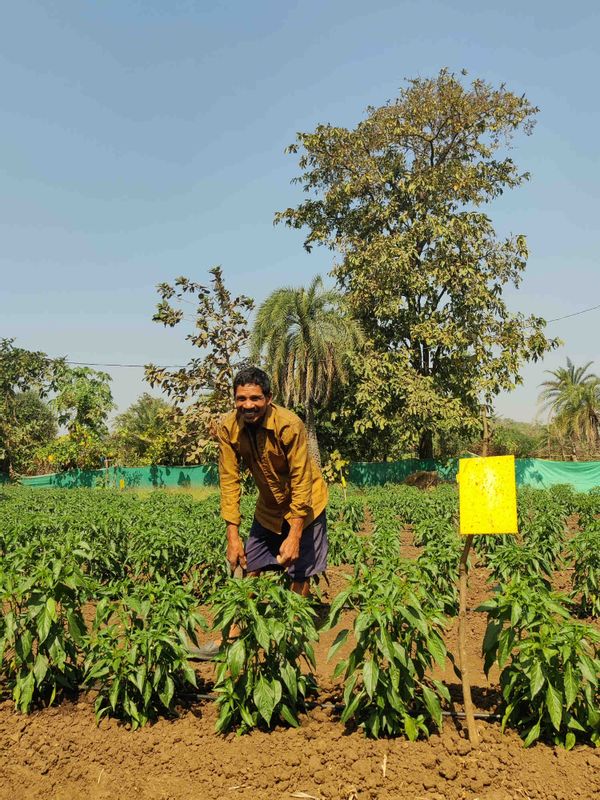 Raman Devji Dolhare, a farmer, believes that the Covid-19 vaccine causes death, and that "Corona is a lie." (Photo by Puja Changoiwala for Undark.)
Raman Devji Dolhare, a farmer, believes that the Covid-19 vaccine causes death, and that "Corona is a lie." (Photo by Puja Changoiwala for Undark.)
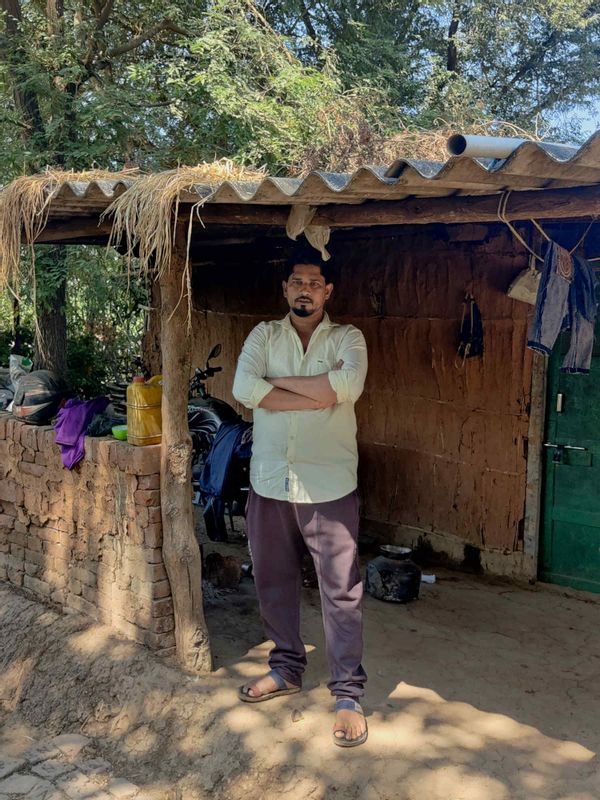 Subhash Kharpade, a member of the village council in Shivpada, says that local rumors about deaths from the vaccine "have spoilt everything." (Photo by Puja Changoiwala for Undark.)
Subhash Kharpade, a member of the village council in Shivpada, says that local rumors about deaths from the vaccine "have spoilt everything." (Photo by Puja Changoiwala for Undark.)
Private health care costs four times more than public health care in India, yet 72 percent of Indians in rural areas use private services. Although rural India contains 65 percent of the country's population, 60 percent of hospitals and 80 percent of doctors are located in the country's urban areas. Rural India, meanwhile, has 3.2 government hospital beds per 10,000 people and suffers from substantial shortages of health care providers. With the majority of the health infrastructure, medical manpower, and other health resources located in urban India, villagers' lives, on average, have been shorter by about five years compared to their urban counterparts in recent years.
According to Kharpade, some residents of the tribal villages in Talasari treat themselves at home, using herbs from nearby jungles. Others approach local gurus for medical help, says Pawar. The doctor adds that the region is home to many such gurus, who are usually untrained, and are themselves unvaccinated. "People go to them for medicines instead of coming here," says Pawar, referring to the Primary Health Center. "The gurus give medicines. Even people from Mumbai visit them."
Reddy maintains that vaccine hesitancy in tribal communities can be addressed through building confidence in the health care system, while ensuring greater health literacy through regular education. He points to the need for trusted voices in the community to spearhead vaccination campaigns by explaining the benefits of vaccination to people. "There has to be a steer that comes in from within the community, from the community leaders," Reddy says. "If the community leaders are not convinced, then the rest of them are not going to be convinced."
This, however, is hardly visible in the tribal belt of Talasari, where the local member of the Legislative Assembly, Vinod Nikole, only took the first dose of his Covid-19 vaccine 10 months after the vaccination program started in India. "I've been running here and there, thinking I'll take it today or tomorrow,"says Nikole. "But my schedule is so tight."
Similarly, Kharpade, the village council member in Shivpada, complained about villagers not taking the vaccine despite his many efforts. But Kharpade says that he has taken only one dose of the vaccine himself, and that he could not take the second jab because, as required by health agencies, he could not gather the minimum of six to seven people to organize a vaccination camp in his village. When asked why he did not visit the Primary Health Center, which is less than a mile away and holds daily vaccination camps, Kharpade did not respond. He is one of around 11.5 million people in Maharashtra who haven't taken their second dose.
According to Pawar, more than three-quarters of the village heads and council members in his tribal belt haven't taken the vaccine. His efforts to get village heads to lead by example haven't worked, either. He cited the example of one leader, who, after persistent convincing, took his first vaccine shot. Pawar asked the man to record a video stating that vaccines were safe, but he refused. "He said he couldn't do it because if people found out that he had taken the vaccine, they would pester him," says Pawar. "So even if they do get vaccinated, they keep it a secret."
In some cases, even health workers have been reluctant to take the vaccine. Baby Wadu, for example, has been visiting homes in Talasari to create awareness among the tribal population about vaccines, but hasn't taken the jab herself. "I'm just not going to take it," she says. "If I had to take it, I would have taken it a long time ago."
Vaccine hesitancy isn't unique to India. According to data from a global tracker that follows vaccine skepticism, Russia leads with 30 percent unwilling to take the Covid-19 vaccine, followed by the U.S. at 19 percent. According to this tracker, only 2 percent of India's population is unwilling to take the vaccine. But a small percent of India's population is significant: 30 percent of Russians amounts to 43 million people, while 2 percent of India is still more than half that number, about 28 million. Further, the survey notes that "the sample in India is representative of just the literate population." In Talasari, the literacy rate is about 47 percent, much lower than the national rate of 74 percent.
"People not taking the dose is a global phenomenon, but the government not countering that with imaginative health education is a disease in India," says T. Jacob John, a retired virologist formerly associated with the Christian Medical College in the city of Vellore in southern India. Although it is the government's job to tackle vaccine hesitancy, John says, he hasn't seen much initiative. This is unlike the polio vaccination program in India, he says, when the government got actors and cricket players to promote the program. But with the "Covid vaccination, from the start, there seems to be some possible vaccine skepticism in the top governmental agencies, adding to the vaccine hesitancy of the public," John adds.
Health workers, too, are weary of the lack of initiative from other government agencies, stating that the burden of the world's largest vaccination program should not fall on India's health department alone. Suryawanshi, the district health officer for Palghar, says that it is the health department's job to administer doses, but with the staff crunch and implementation of other national health programs, there aren't enough resources to tackle vaccine hesitancy as well. According to Suryawanshi, 40 percent of health care jobs in the government-run facilities of Palghar lie vacant.
"Other departments must also try to change their views because we have tried everything," says Suryawanshi. He adds that the health department has taken several measures, like approaching local leaders and employers of the villagers, while also employing the local media to address the hesitancy. But the responses from villagers have turned violent. If a team visits a village to educate and create awareness about vaccines, and villagers beat up the staff, he says, then "why put health workers at risk?"
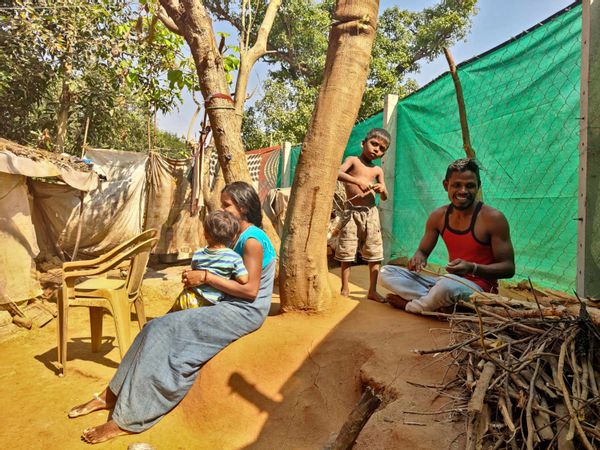 Naina Kakad, a woman from Shivpada, says she cannot be vaccinated because of the medicines she's taking. (Photo by Puja Changoiwala for Undark.)
Naina Kakad, a woman from Shivpada, says she cannot be vaccinated because of the medicines she's taking. (Photo by Puja Changoiwala for Undark.)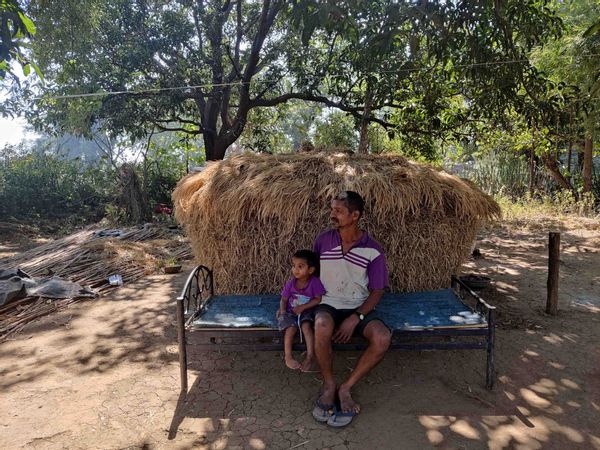 Ratna Rupji Wartha, a tribal farmer, says that he is afraid of taking the vaccine because his hemoglobin levels are low. (Photo by Puja Changoiwala for Undark.)
Ratna Rupji Wartha, a tribal farmer, says that he is afraid of taking the vaccine because his hemoglobin levels are low. (Photo by Puja Changoiwala for Undark.)
Although the disinclination toward Covid-19 vaccines is vivid in the tribal villages of Talasari, authorities refuse to acknowledge the reluctance. Nikole, the member of Legislative Assembly for Talasari, denies the existence of vaccine hesitancy in his constituency, while J.A. Jayalal of the Indian Medical Association says that "India has certainly done very well," and that the national government, including the prime minister, was "very cautiously playing the role" in addressing vaccine hesitancy.
In the past year, Modi has spoken about the need to shun vaccine hesitancy, but Reddy of the Public Health Foundation of India feels that "one-shot messaging" is not enough to address tribal communities, some of whom may not have seen the full brunt of the pandemic due to their relatively remote locations.
"One has to really talk to them about what the potential threats are, even if they've not experienced it in the community right now — with more variants coming in and spreading much faster, it is likely to reach them," says Reddy. "And since their health services are also relatively distant, it is better to get the protection. So this requires more engaging and more frequent conversation."
Vaccine hesitancy has a substantial impact on the pandemic trajectory, which may challenge current efforts to control Covid-19, notes a 2022 study conducted by researchers at the Imperial College London. To study the impact of vaccine hesitancy, the scientists used mathematical modeling of SARS-CoV-2 transmission and vaccine hesitancy data from population surveys in 10 European countries. When there is both vaccine hesitancy and relaxation of other public health measures, the models estimated that mortality could increase by up to seven times, compared to ideal vaccination coverage. "Our work demonstrates that vaccine hesitancy might have a substantial health impact on the population, and therefore, it is a public health priority to increase trust in vaccines," the researchers note.
But when it comes to vaccine hesitancy among the tribal communities in India, experts seem to be divided on the implications for the population at large.
According to Yasmin at Stanford, India's tribal communities are among some of the most vulnerable populations in the country. But the assumption that this vulnerability only harms these communities ignores the ways in which even distant communities are all connected. "Covid-19 vaccination rates are less than 10 percent in many Adivasi communities, heightening the risk of severe disease and death in those populations and the risk of the virus continuing to spread between communities as people travel for work," she wrote in an email to Undark.
Anant Bhan, a global health researcher and adjunct professor with the south-India based Yenepoya, an institute of higher education independent from the government's education department, agrees, stating that any unvaccinated or inadequately vaccinated pocket poses a risk to the wider community. With large chunks of unvaccinated populations as in Talasari, there is also the possibility of the emergence of new variants, he says, adding that one of the reasons why new variants have emerged repeatedly is that there are large sections of populations across the world with very low vaccination rates.
While several experts agreed that it is necessary to vaccinate the hesitant tribal populations of India, they were divided on the impact this hesitancy could have on India's and the world's fight against Covid-19. John feels that the 69 million Indians who were vaccine-hesitant as of December, out of an approximately 1.4 billion population, is "not a big proportion." And Reddy says that tribal communities "may not be much at risk" with the overall threat decreasing in terms of severe illnesses and the remote geographies of such communities.
"If they're mostly living in secluded community life and their contact with the urban areas is limited, then the danger, even if they're infected, is somewhat limited," says Reddy. "They're not living in large urban high-rise buildings. They're working mostly in open spaces. So the risk of transmission is much lower in such places."
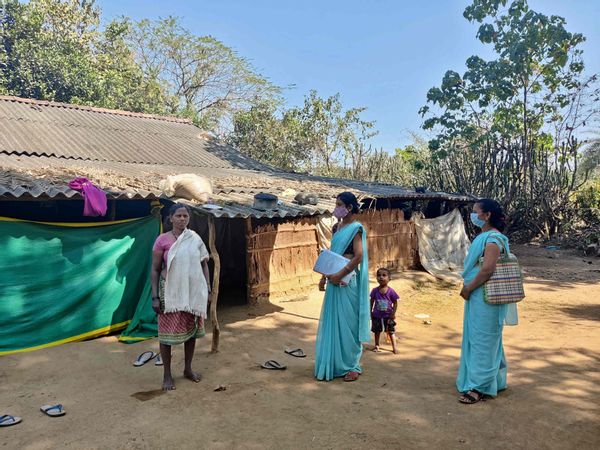 Health workers approach a tribal family in Talasari. (Photo by Puja Changoiwala for Undark.)
Health workers approach a tribal family in Talasari. (Photo by Puja Changoiwala for Undark.)
The omicron variant, however, has proven the threat to the unvaccinated. In India, for instance, a recent study found that the death rate for fully vaccinated people hospitalized after being infected with the variant is 10 percent, compared to 22 percent among the unvaccinated and the partially vaccinated. Pawar says that if another big wave of Covid-19 were to hit the world, infections in his tribal villages could rise and it would be very difficult to provide health services to everyone.
"Because most of the population is unvaccinated, there's a greater threat of spread of infection," says Pawar. "And it's not like the villagers stay in their villages. They travel for work, visit industrial areas — they can infect others too. It can lead to a massive spread."


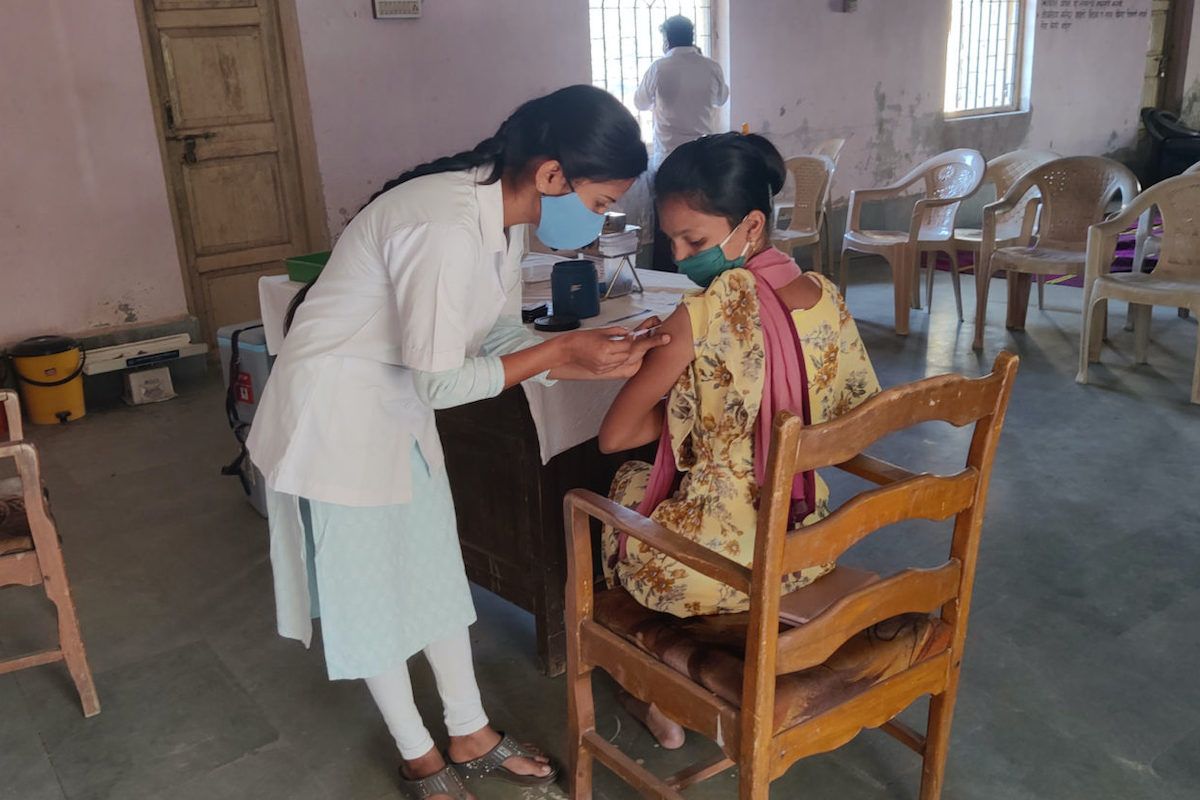

Shares